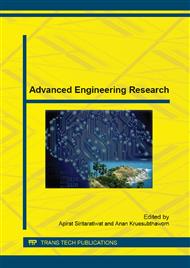p.637
p.643
p.647
p.651
p.655
p.659
p.663
p.667
p.671
Feed Formulation under Raw Material and Production Costs Consideration
Abstract:
In this paper, the problem of animal feed formulation is addressed. A feed product is comprised of various kinds of raw ingredients. Traditionally, the least cost formulation (LCF) approach is used in the feed industry to determine the optimal blend of the feed ingredients based on nutritional requirements and raw material costs. LCF, however, does not consider the production cost. In practice, a wide variety of raw ingredients may require different levels of production load. For example, feed ingredients with high amount of fiber content may reduce the pelleting production rate, leading to high production cost. The main focus of this study is the development of a mathematical model to find an optimal blend of the feed ingredients with an objective to minimize the overall cost consisting of raw material cost, production cost, and opportunity cost. Multiple linear regression equations are used to estimate the production rate that depends on the fat and the fiber contents in the feed mix and the durability index of the feed pellet. The results indicated that the proposed method is more beneficial than traditional LCF and applicable to the feed industry.
Info:
Periodical:
Pages:
667-670
Citation:
Online since:
August 2015
Keywords:
Price:
Сopyright:
© 2015 Trans Tech Publications Ltd. All Rights Reserved
Share:
Citation:


